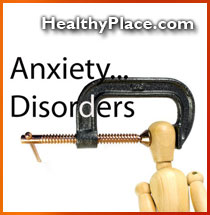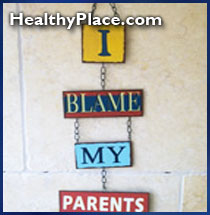 Welcome to Shocked! ECT. Even though I sometimes take a lighthearted approach to the issue of electroconvulsive therapy (ECT), I consider it a serious issue, often shrouded in misinformation.
Welcome to Shocked! ECT. Even though I sometimes take a lighthearted approach to the issue of electroconvulsive therapy (ECT), I consider it a serious issue, often shrouded in misinformation.
You will find information that is pro and con on the topic of ECT. I leave it to you to weed through the materials and choose for yourself. I hope that you find this information useful, and if you are considering ECT, you will have made an informed choice. As an ECT survivor, I wish you the best, and a full recovery from the beast known as mental illness.
I created Shocked! ECT in 1995 after having had ECT myself the year before and having a very bad result. It started simply, a way of sharing information with others who were searching for answers. It's grown into an extensive website with what I hope is comprehensive information that will offer support and provide some of the answers to many of your questions.
I receive a lot of email every day, from persons considering ECT, loved ones, and persons who have had ECT and don't understand what happened. They were given promises, and those promises were broken. Yet it never fails to astound me when I receive email full of the lies the industry continues to tell. I absolutely swear that out in the field, in modern day civilization, psychiatrists are telling their patients that ECT is the miracle cure, it will cure your mental illness, your migraines, and even Alzheimer's Disease. (That was even testified as fact in a court of law, and swallowed by a US judge, who then ordered forced ECT on a woman in her 80s.)
I am called many things by the ECT industry and proponents - a Scientologist, a nut case, anti-psychiatry zealot.
I am none of the above. I am a woman who was severely depressed (re-diagnosed as bipolar disorder during the ECT treatments) and had ECT in 1994. The ECT, according to my mother, lifted me from a depression into a brief silliness (the euphoric high that typically follows ECT), quickly followed by an even worse depression than before. And it left me with severe memory loss, and I believe some cognitive damage.
I'm interested in the people who say "But you're so articulate now, how could it have possibly been destructive?" My answer: You do not know me. You do not know what I was like before I had the ECT, and you do not know what I am like now. Do not pretend that you know what I feel, what I think or who I am. A few words on a website does not give you a picture of me, other than the picture I *choose* to present in public. Most people who know me, other than those EXTREMELY close to me never even knew I was depressed. I have a public face, and a private face, and the two are very different. I work very hard at maintaining the public face, and I have worked hard to recover from a very low point. I have never said I was brain dead, simply that there was damage.
It took me a year to emerge from the fog that resulted from the ECT. And it's taken six years to recover to the point that I am able to fully articulate what has happened. I have spent the last years reading the research, including the studies that ECT experts use to promote the treatment. Day by day, I grow more convinced that ECT is not an effective treatment, and that it does little more than provide a brief respite from depression, followed by despair and hopelessness.....and potential damage to the brain.
This website is not an attempt to dissuade anyone from having ECT. If you have chosen to have the treatment, I support your decision and wish you well. If you've come looking for information, I sincerely hope that you will find genuine sources of information presenting all sides of ECT, not just the public face that the industry presents. However, you will find plenty of pro-ECT information here, because I think it's important to look at this from every angle.
Yes, there are anecdotal stories that ECT is a miracle cure. And those are trotted out continually when proponents of the treatment try to deflect any negative information. Yet, when former patients come to the forefront to discuss their bad experiences, the proponents say their concerns aren't valid, that anecdotal information isn't worthy of recognition. Well, folks, you can't have it both ways. I believe that if you're going to listen to anecdotal information, you must listen to both sides, not just the "ECT saved my life" viewpoint. On the other hand, I do believe it's important to hear the happy endings as well. They are important. All of the voices of ECT are important, and should be heard...including mine.
I have been threatened and I have been harassed because of my views. I have had emails from fanatics that included viruses; pictures of mutilated animals with threats that I'm next; name calling (Scientologist, as well as words that are offensive to women); gifs saying f*** you wh***; and "orders" telling me to stop what I'm doing. People are now on notice that, from this point on, all emails like these will be publicly posted. You will see various threats of lawsuits posted around the site, and I will post all emails containing legal and any other kind of threat.
I will not submit to the powers that be, and I will be heard. I am continually called a Scientologist, and it makes me angry. I don't believe that my religious beliefs are anyone's business but my own, but for the record....I was raised a good Presbyterian and if I went to church today, that is the church I would choose.
I do have some goals regarding ECT and those include:
1. Regulation. As it stands, this treatment is not regulated. Devices are not tested until they are used in practice. And as we've seen with the recent MECTA lawsuit, consequences can be disastrous. Moreover, there's been no recall of this machine. How many of these machines are out there still being used?
I want statistics kept in every state. Currently, only four states - California, Massachusetts, Colorado, and Texas - maintain any sort of record keeping. Groups like NAMI and the APA oppose this, saying it adds a layer of red tape. Bullshit! It gives data to researchers on the number of patients receiving ECT, complication rates, and demographics. We don't even know the number of patients having ECT...any figures are estimates only.
Even very strongly pro-ECT doctors are recognizing that ECT treatment is a free-for-all. With some regulation, perhaps there would be standards, rules, and accountability instead of what is now nothing more than haphazardness.
2. Informed consent. Patients have the right to know the full risks, not a watered-down version that the kinder, gentler ECT of today is without any risk. In public, doctors say memory loss from ECT and cognitive damage doesn't occur. In private, it's accepted as fact, and studies are done to find drugs to lessen this. The truth beforehand, IMO, would result in better outcomes for patients. They would know *before* ECT that they might have substantial, permanent memory loss, and would be able to make a valid choice that such loss outweighed continuing depression. And they should be told it is not 100 percent effective, nor do the effects last in most cases. They should be made aware of maintenance ECT *before* they undergo a series, not when their treatments have failed.
3. An end to forced ECT. This is not a treatment that should be given without consent. Enough said.
4. More research into the lasting effects of ECT. ECT proponents claim that studies showing brain damage and permanent negative effects are out of date. But they are the only studies that exist. Let's do more research into this - the funding is there. Promises are not being kept.
I certainly don't want to believe that the very people we entrust with our health would deliberately harm us. But in the last years of intense research, in talking with thousands of ECT patients, I do believe that we, the public and consumers, are not being told the full truth. Whether that's out of a misguided, paternalistic attempt to do what's "best" for the mentally ill, who don't know any better, or whether it's financial, I can't say for sure. I suspect it's a combination of the two.
I think the doctors on the front line, for the most part, are sincere in their belief that they are helping us. And certainly in some cases, patients have credited ECT with saving their lives. Their views are every bit as important as those people who say ECT has ruined theirs.
Quite often, people charge that I'm just an anti-psychiatry zealot, someone out to deny lifesaving treatment to those in need. I am neither anti-psychiatry, (I still see a psychiatrist every other week) nor am I out to ban electroconvulsive therapy. I do want it regulated, and I want my end of the spectrum, someone who has been harmed by ECT, recognized.
I had ECT in July 1994 and this is my experience. I am one of many.
Honestly, I don't remember most of what I'm going to tell you. It's based on stories from family and friends, and from writings in my journal.
I was suffering a severe depression, and my psychiatrist, like so many others, felt the antidepressant medications weren't working. He had been pushing for ECT for months, but I resisted. He told me the "new and improved" ECT was nothing like the ECT of the past. They now used unilateral instead of bilateral, and a lot less power. He engaged my family in the fight, and they joined him in encouraging this treatment.
Finally, according to my journal, my psychiatrist gave me an ultimatum. Have the ECT or get lost. This wasn't force, but it certainly was coercion. My feelings were so clear, as evidenced in my journal:
I feel like I'm going to die. The blackness surrounds me and there's no way out. Today I asked Dr. E if I could try a couple of drugs I'd heard about from Dr. Goldberg, but he yelled at me. Said he didn't care how the hell they did it at Columbia. This is how we do it here. And he told me I had to have ECT, or he wanted me out as his patient. I don't have a choice anymore. No other doctor will take me. I'm such a bad patient. Hard to treat. No one wants that. They want a patient who will cheerfully take her Prozac and get better. I fail, even at depression. So I guess I'll have the fucking ECT. Nothing left to try. It worries me, but at least it will work, and get rid of this black cloud that is swallowing me whole. Let's electrocute that part of me, sentence it to death, and let my old self reemerge. Dr. E finally wins this round.
And so I was given a series of bilateral ECT treatments. Apparently they talk a good talk about unilateral, but in reality it's not used that much. In my dealings with so many ECT patients, I've only run into one person who actually had unilateral. And it didn't help his depression at all.
Frankly, I don't remember a thing. I was in the hospital for the entire time. Each day, according to accounts from others, I had a bad headache.
For one day, I refused to speak any English, my native language. I spoke only Russian, and they think I was cussing out the doctor, due to the intensity of my voice and body language.
I tried to fix my mother up with a man (patient) whose pants kept falling off. Then I gave him a pair of my sweatpants. My mother was not amused, although the rest of my family thinks it's hilarious.
My aunt brought me some kitchen towels and placemats with kittens on them. I thought they were cute and thanked her. This is now a joke, although it's more tragic than funny, IMO. Each day, I would see the items and say, "Oh, aren't those cute. Where did they come from?" My mother or aunt would tell me my aunt brought them. That was a daily event, and continued for weeks after I was home. For weeks, I would ask, "Oh, aren't those cute. Where did they come from?" when I saw them on the table.
The worst of all is that I apparently gave my phone number to several patients. One was a drug dealer, and he called me several times, saying I had given him my number in hospital, trying to set up drug deals...that I wanted to buy crack. I've never used crack in my life. I admit that I occasionally indulge in a toke or two of pot, but I certainly would never attempt to buy it from someone I didn't know.
I would get calls from men, saying I had consented to go on dates with them, and got one from a fellow who said I told him he could move in with me. I have no idea who these people were, except that I'd given my number to them in the hospital. (My number was unlisted.) From the conversations, I don't think I ever met any of them outside the hospital. I sure hope not.
Those calls continued until the day I moved to a new town. I've since heard from several ECT patients who have done similar things.
The spring before ECT, I had taken (apparently) a few trips to New York City, to see my then-boyfriend. He and I are still friends and talk by phone occasionally. I have absolutely no memory of those trips, although from the smiles on my face in pictures, I apparently had a wonderful time. The only proof I have of those trips is plane ticket stubs, photos and conversations with the gentleman. He and I have talked many times, and I have to fake it, pretending I remember what he's talking about. (He didn't know I had ECT...he was - very smartly - against it.)
Recently, I talked to him, and he asked me about something I'd apparently purchased on one of my NY trips . To this minute, I'm confused about it. I can't find the item, and have no memory of ever having it. I still have some boxes at my aunt's house, so perhaps it's there. But it's so bothersome to know that I have no memory of ever having bought or owned it.
I've lost about two years of my life from memory loss...approx. a year and a half before the ECT, and about 8 months following. It's just gone. The ECT industry says that I'm mistaken. Some say I'm a Scientologist, as if my religious belief would cause me to misunderstand what happened to me. I am offended by that, and I am offended that I continually have to publicly proclaim what my religious beliefs are.
The memory loss is heartbreaking because I should have some wonderful memories of my NY trips. And I'm sure there are many other good times in there. But I don't remember them.
What hurts the most is the scorn I receive from the ECT industry, from the doctors who make their living by this, from NAMI, and from the APA. They simply dismiss my complaints, as they deny the memory loss of so many others. It's bad enough to have the loss, but then to be told I'm lying, or over exaggerating, or misunderstanding - it's horrible. They just say it didn't happen.
Or that I'm a Scientologist.
But it did happen. I live it every day. And I'm a Presbyterian.
(I have removed another story concerning my ECT at the request of those involved.)
Let me again be very clear. I am pro-choice on all things, and that extends to ECT. I absolutely support the right of anyone who chooses ECT...or chooses something else.
Had I been told honestly that I might lose a portion of my memory, and that I might suffer permanent cognitive damage, I would not be angry as I am today. It would not have been so devastating to me. I would have made a more informed decision.
Juli Lawrence
ECT survivor
next: British Expert Warns Against Shock Therapy for Children
~ all Shocked! ECT articles
~ depression library articles
~ all articles on depression
 Go straight to the journals and read more about ECT and its effects, as well as the issue of informed consent for electroconvulsive therapy. One of the biggest criticisms about contemporary ECT research is that the leading researchers are those who make their living from ECT - writing papers, books, and yes, owning the companies that manufacture not only the machinery, but the accessories (mouth guards, and so on).
Go straight to the journals and read more about ECT and its effects, as well as the issue of informed consent for electroconvulsive therapy. One of the biggest criticisms about contemporary ECT research is that the leading researchers are those who make their living from ECT - writing papers, books, and yes, owning the companies that manufacture not only the machinery, but the accessories (mouth guards, and so on). This site is a comprehensive collection of information about ECT, electroconvulsive therapy (aka electroshock, shock therapy).
This site is a comprehensive collection of information about ECT, electroconvulsive therapy (aka electroshock, shock therapy). Dr. John Breeding gives testimony to the New York State Assembly hearings on electroshock, May 2001. Dr. Breeding says ECT *always* causes brain damage.
Dr. John Breeding gives testimony to the New York State Assembly hearings on electroshock, May 2001. Dr. Breeding says ECT *always* causes brain damage. The Committee for Truth in Psychiatry, or CTIP, is a national organization of over 500 former electric shock patients. None of us was truthfully informed about the nature or consequences of this treatment before consenting to it, and we have pooled our experience-gained knowledge to provide truthful information about it for future psychiatric patients.
The Committee for Truth in Psychiatry, or CTIP, is a national organization of over 500 former electric shock patients. None of us was truthfully informed about the nature or consequences of this treatment before consenting to it, and we have pooled our experience-gained knowledge to provide truthful information about it for future psychiatric patients. Welcome to Shocked! ECT. Even though I sometimes take a lighthearted approach to the issue of electroconvulsive therapy (ECT), I consider it a serious issue, often shrouded in misinformation.
Welcome to Shocked! ECT. Even though I sometimes take a lighthearted approach to the issue of electroconvulsive therapy (ECT), I consider it a serious issue, often shrouded in misinformation. More than 19 million adult Americans ages 18 to 54 have anxiety disorders. The National Institute of Mental Health (NIMH) supports research into the causes, diagnosis, prevention, and treatment of anxiety disorders and mental illnesses. This research is conducted both in the Institute's intramural laboratories and in biomedical research institutions across the country. Studies examine the genetic and environmental risks for major anxiety disorders, their course, both alone and when they co-occur with other illnesses such as heart disease or depression, and their treatment. Scientists seek to discover the basis of anxiety disorders in the brain and their effects on the fu and other nctioning of the brain and other organs. The ultimate goal is to be able to cure, and perhaps even to prevent, anxiety disorders.
More than 19 million adult Americans ages 18 to 54 have anxiety disorders. The National Institute of Mental Health (NIMH) supports research into the causes, diagnosis, prevention, and treatment of anxiety disorders and mental illnesses. This research is conducted both in the Institute's intramural laboratories and in biomedical research institutions across the country. Studies examine the genetic and environmental risks for major anxiety disorders, their course, both alone and when they co-occur with other illnesses such as heart disease or depression, and their treatment. Scientists seek to discover the basis of anxiety disorders in the brain and their effects on the fu and other nctioning of the brain and other organs. The ultimate goal is to be able to cure, and perhaps even to prevent, anxiety disorders. Scientists supported by the National Institute of Mental Health (NIMH) and the National Institute on Drug Abuse (NIDA) have documented that chronic cigarette smoking during adolescence may increase the likelihood that these teens will develop a variety of anxiety disorders in early adulthood. These disorders include generalized anxiety disorder, panic disorder and agoraphobia, the fear of open spaces.
Scientists supported by the National Institute of Mental Health (NIMH) and the National Institute on Drug Abuse (NIDA) have documented that chronic cigarette smoking during adolescence may increase the likelihood that these teens will develop a variety of anxiety disorders in early adulthood. These disorders include generalized anxiety disorder, panic disorder and agoraphobia, the fear of open spaces. I wasn't enjoying the working there, it was not a fun place to be. I found myself being more stressed and spending more and more precious time and energy involved in gripe sessions with the other employees. It's like we were all comparing notes to makes sure we weren't insane.
I wasn't enjoying the working there, it was not a fun place to be. I found myself being more stressed and spending more and more precious time and energy involved in gripe sessions with the other employees. It's like we were all comparing notes to makes sure we weren't insane. Teenagers are notorious for blaming all their problems on their parents. Sometimes they may be right, but just as often they may be wrong. But if your teen has a social phobia, he or she may have hit paydirt in the blame department.
Teenagers are notorious for blaming all their problems on their parents. Sometimes they may be right, but just as often they may be wrong. But if your teen has a social phobia, he or she may have hit paydirt in the blame department. NMS is an extreme medical emergency. Although it occurs in no more than 1% of patients who take antipsychotic medications,1 NMS develops rapidly, and death occurs in about 10% of cases, largely because of the consequences of severe rigidity and dehydration, including acute renal failure, respiratory distress, and deep vein thrombosis.2,3 NMS is believed to be caused by an acute reduction in dopamine activity as a result of drug-induced dopamine blockade. It was first described in 1960 during early studies of
NMS is an extreme medical emergency. Although it occurs in no more than 1% of patients who take antipsychotic medications,1 NMS develops rapidly, and death occurs in about 10% of cases, largely because of the consequences of severe rigidity and dehydration, including acute renal failure, respiratory distress, and deep vein thrombosis.2,3 NMS is believed to be caused by an acute reduction in dopamine activity as a result of drug-induced dopamine blockade. It was first described in 1960 during early studies of